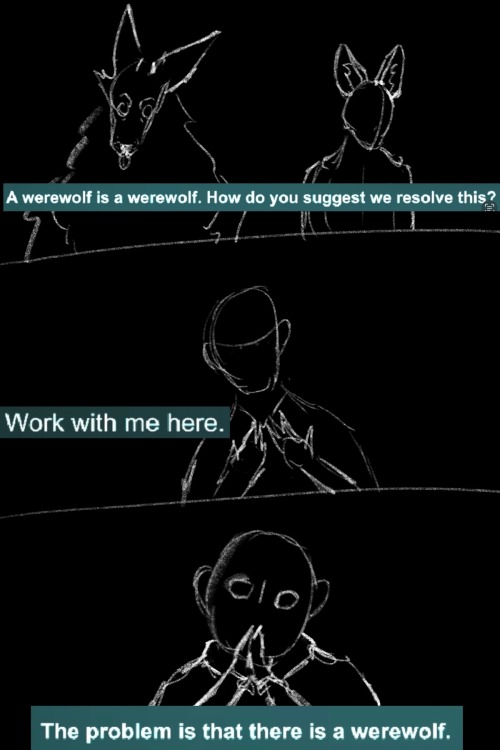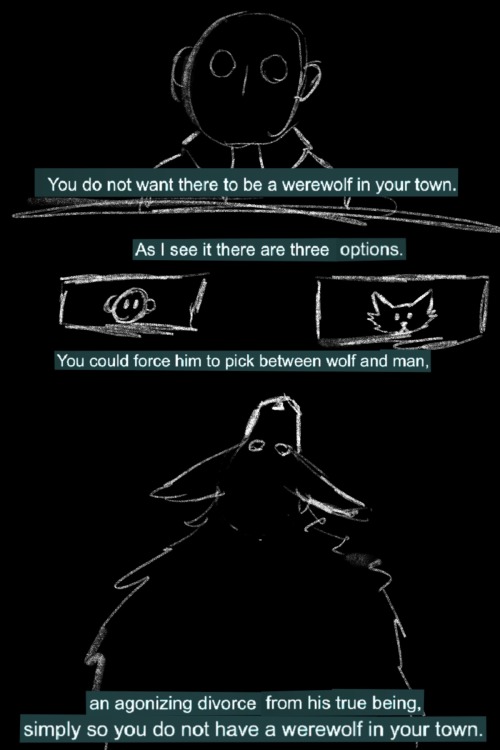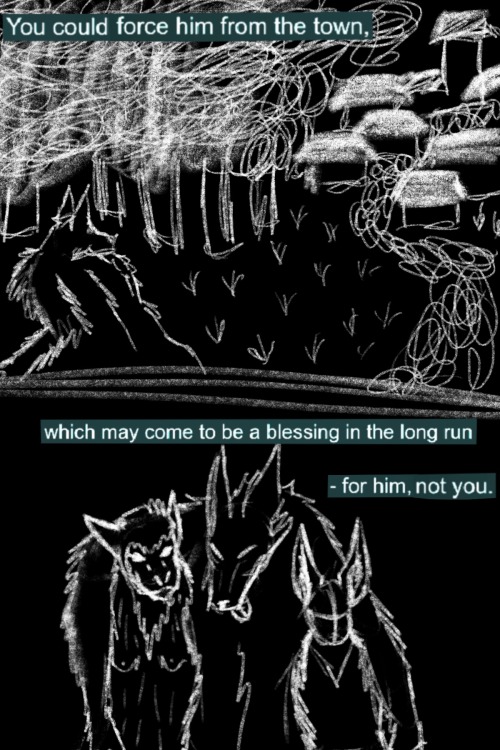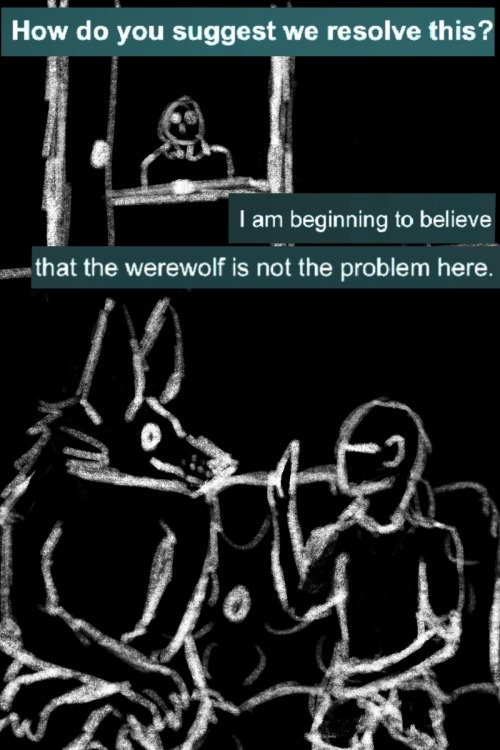Writing Snippet #3
Writing Snippet #3
Her brother remained dutiful. Oh so dutiful, never keeping his attention off of Donna, locked in a strange orbit as she did the same. Esther didn’t miss the quick slide of Donna’s hands underneath the expensive tablecloth, chocolate and sweets passed to him as their fingers brushed, a rehearsed game. She knew the way Milas’s apartment smelled like irises and malvas and how his sweatshirt hung from Donna’s shoulders as she sat on the blue divan that had Donna’s flair written all over it.
More Posts from Ajkiranwrites and Others













A comic based on this poem
"Stop saying 15 year olds with weird interests are cringe, they're 15" this is true however you should also stop saying adults with weird interests are cringe because who gives a shit

thank you Canada 🇨🇦
PLEASE for the love of the universe read anti-colonial science fiction and fantasy written from marginalized perspectives. Y’all (you know who you are) are killing me. To see people praise books about empire written exclusively by white women and then turn around and say you don’t know who Octavia Butler is or that you haven’t read any NK Jemisin or that Babel was too heavy-handed just kills me! I’m not saying you HAVE to enjoy specific books but there is such an obvious pattern here
Some of y’all love marginalized stories but you don’t give a fuck about marginalized creators and characters, and it shows. Like damn
Writing Morally Gray Characters
Morally gray antagonists and heroes can bring up many interesting questions about your story's theme and plot. Yes, your hero does want to save the world, but resorts to cruel ways of bringing peace?
Being morally gray can also mean that the character is highly goal- oriented and values efficiency and success over anything.
Deceiving Appearances
As is true in real life, a person's intentions aren't always obvious. A character, their title, background or really just how they look might at first indicate they're the hero type but surprise - they're not.
By hiding ulterior motives behind more apparent ones, you can add depth to your morally gray characters. Appearances can be deceiving, and that makes for a juicy read.
Morally Gray vs. Villains
Morally gray characters and villains are not strictly one and the same. Yes, there is overlap-they can be villains-but the distinctions are there nonetheless.
I don't think having a dark past to provide motivations for morally gray characters is too effective. They do intend to harm others, and sometimes, that's just the way they are.
Recognition
Your morally gray character should recognize that their choices can cause harm, intentionally or otherwise.
Although he's willing to risk the chance in his pursuit of knowledge, he does actively recognize that his actions can result in negative consequences. He sometimes acknowledges this before he does something, and sometimes only in hindsight.
Remorse
They must understand and experience remorse. When the consequences of their actions wreck and story world and kills people around her, she would certainly have regrets and even struggle to undo what she did.
The point here is, she won't regret until she has already caused the wreckage.
Redemption
Finally, when even they feel things have gone too far, your morally gray character must seek redemption however that manifests itself in your story.
For all their logic and reasoning, they are not without feeling. They can grow to care for other characters and go out of their way to help them at times, even save their life.
If you like my blog, buy me a coffee☕ and find me on instagram! 📸
male entitlement in academic spaces is so boring. can’t tell you how many times i’ve been in a class and a girl gives a short, insightful analysis, and then a dude raises his hand and says “jumping off of that…” then says literally the same thing she said but longer and worse.
This feels like another writing prompt idea which is completely unrelated to my current NaNoWriMo project but one that I will still work on
Person A: “This feels like a missed opportunity.”
Person B: “ This feels like a crime.”
Best Prompt Lists of 2022!
Intimate Moments
One Hundred Compliments
Meet Cutes
Bed Sharing Scenarios
Saying I love you…
30 Days Writing Challenge
Daily Writing Challenge
Teasing Dialogue
Pregnancy Prompts
Romantic One-Liners Part II
The year 2022 is coming to an end. I wish all of you only the best for 2023!
If you like my blog and want to support me, you can buy me a coffee! And check out my Instagram! 🥰
Writing Description Notes:
Updated 17th July 2024 More writing tips, review tips & writing description notes
Facial Expressions
Masking Emotions
Smiles/Smirks/Grins
Eye Contact/Eye Movements
Blushing
Voice/Tone
Body Language/Idle Movement
Thoughts/Thinking/Focusing/Distracted
Silence
Memories
Happy/Content/Comforted
Love/Romance
Sadness/Crying/Hurt
Confidence/Determination/Hopeful
Surprised/Shocked
Guilt/Regret
Disgusted/Jealous
Uncertain/Doubtful/Worried
Anger/Rage
Laughter
Confused
Speechless/Tongue Tied
Fear/Terrified
Mental Pain
Physical Pain
Tired/Drowsy/Exhausted
Eating
Drinking
10 Best Books About Writing Fiction
Someone recently asked me for some fiction writing book recommendations, so here they are!
Some fiction writing teachers try to steer their students clear of books about writing. While it’s true that there’s a lot of bad or dubious writing advice out there, my philosophy is that more information is always better. Over the years, I’ve read voraciously about fiction writing–upwards of 50 books about the writing life, plot, fiction craft, dialogue, character development, you name it. While I got a little something from each one, here are the 5 star gems that are worth sharing. Enjoy!
Best Books About the Writing Life
Bird by Bird, Anne Lamott

It’s a classic for a reason. Lamott’s trademark humor makes for an effortless read as she shares her wisdom into the process of writing. Equal parts technical help, encouragement, and brutal honesty balance throughout the book, keeping the reader engaged and in good spirits from start to finish.
From Where You Dream, Robert Olen Butler
Butler’s ideas about the process of writing fiction are not necessarily unique, but I’ve found no other book that discusses the writing “trance” as thoroughly as this one. The exercises in this book teach how you to access the writing “dream state” that good stories often come from. The book can be a little esoteric at times, but it’s worth the patience it takes to understand what Butler is getting at here. Especially recommended for writers who have intrusive inner critics, and those who have strong ideas but find that their writing feels lackluster and flat.
The Writing Life, Annie Dillard
This is a short read, so I’ll just provide a titillating quote and you can go pick it up for yourself: “One of the few things I know about writing is this: spend it all, shoot it, play it, lose it, all, right away, every time. Do not hoard what seems good for a later place in the book, or for another book; give it, give it all, give it now… Something more will arise for later, something better. These things fill from behind, from beneath, like well water. Similarly, the impulse to keep to yourself what you have learned is not only shameful, it is destructive. Anything you do not give freely and abundantly becomes lost to you. You open your safe and find ashes.” -Annie Dillard
Best Books About Fiction Craft
Self-Editing for Fiction Writers, Rennie Browne and Dave King

Hands down, this is the best craft book on the market. It’s written for beginning writers, but is layered and subtle enough to be useful for advanced writers as well. I’ve read and re-read this book at many different stages of my learning process and taken away something new each time. Unlike the cover suggests, this is not a book about grammar. It shows you how to edit for flow and syntax, to properly tag your dialogue, the basics of show-don’t-tell, as well as providing helpful exercises where you get to try your hand at editing once you’ve learned the techniques.
Stein on Writing, Sol Stein
Make no mistake: Sol Stein is a pompous asshole. But he’s also super, duper smart. I consider this to be an advanced craft book, just because of the level of detail he goes into, but I think a beginner would get a lot out of it as well. Another classic, which means it’s almost always at the library.
Writing Fiction: A Guide to the Narrative Craft, Janet Burroway
Yes, this is a text book. Thick. Heavy. Teeny tiny print. But it’s good. And because it has a million editions, you can get an old version used on the internet for like $.04. Especially nice are the full-length short stories that are supplied as examples in the back of every chapter.
Best Book About Dialogue
Writing Dialogue, Tom Chiarella
Chiarella doesn’t bog the reader down with his own set of hard rules about dialogue, instead he skillfully and humorously persuades the reader about what works and what doesn’t. Busting such myths as “dialogue sounds like real speech,” he gives dozens of creepy-writer-stalker tips like “crowding” and “jotting,” which is basically where you eavesdrop on people and write down what they’re saying. I now carry a notebook on my person at all times specifically for this purpose. I think this book might be out of print (yet 50 Shades of Gray makes millions… is there no justice in this world?), but you can still get it on the internet for a decent price. Do it now before it’s too late!
Best Books About Plot
Plot Whisperer, Martha Alderson
Stupid title, great book. Alderson talks about the idea of the “Universal Story,” which is the process of struggle (conflict) and transformation (climax and resolution) present in most stories. These “energy markers,” she says, are so inherent in our lives, and in the very idea of story itself, that they can be found in almost every plotted novel. She then proceeds to go into insane detail describing these markers and how to incorporate them into your own writing in order to make a plot that resonates with readers. From time to time she also drops some wisdom a la The Artist’s Way (which she calls, I believe, “The Writer’s Way”), helping writers to overcome the hurdles of writing a book. While Alderson is not a writer herself, she has been studying plot and assisting writers with plot struggles for over a decade, and her knowledge and credibility shine in this book. I came away with a much deeper understanding of the purpose of plot and how to wield it, and highly recommend this book.
Wired for Story, Lisa Cron

The sensational subtitle (“The Writer’s Guide to Using Brain Science to Hook Readers from the Very First Sentence”) makes it sound like one of those smarmy write-a-novel-in-30-days books, but don’t be fooled. This the best book on plot I’ve read. It’s devoted to the idea of ‘story’–what makes a story, what people are ‘wired’ to look for and want in a story, and how to satisfy those cravings in your fiction. The 'brain science’ part is presented in a very accessible way, and Cron only gives us enough information to make her point, never overloading the reader with jargon. She talks a lot about the brain’s unconscious impulse to track patterns, make connections, and look for cause-and-effect, and how to translate that into good storytelling. Her definition of 'story’ alone is more valuable than 200 pages of most fiction craft books. There are endless gems in this book, and now my copy (that I purchased! with money! that’s saying a lot already) is completely marked up with pencil and sticky notes. I know this is a book I will refer to time and time again. Highly recommended.
Writing Fiction for Dummies, Randy Ingermanson
If you’re looking for advice about craft, the finer points of good prose, or syntax, look elsewhere. But if you want help with your plot and structure, how to organize scenes, when to cut a scene, how to analyze your characters, keeping your story focused, and what order to do it all in, Ingermanson might just blow your mind. His “Snowflake Method” of plotting is loved by thousands, and is discussed in length all over the internet for free. If it resonates with you, you might want to do what I did and buy the book.
/ / / / /
@theliteraryarchitect is a writing advice blog run by me, Bucket Siler, a writer and developmental editor. For more writing help, download my Free Resource Library for Fiction Writers, join my email list, or check out my book The Complete Guide to Self-Editing for Fiction Writers.
-
 perfectbasementtheorist liked this · 2 years ago
perfectbasementtheorist liked this · 2 years ago -
 ajkiranwrites liked this · 2 years ago
ajkiranwrites liked this · 2 years ago -
 ajkiranwrites reblogged this · 2 years ago
ajkiranwrites reblogged this · 2 years ago

Original Work Primary Blog. Sideblog for fanfics @stickdoodlefriend Come yell at me! | 18+
241 posts